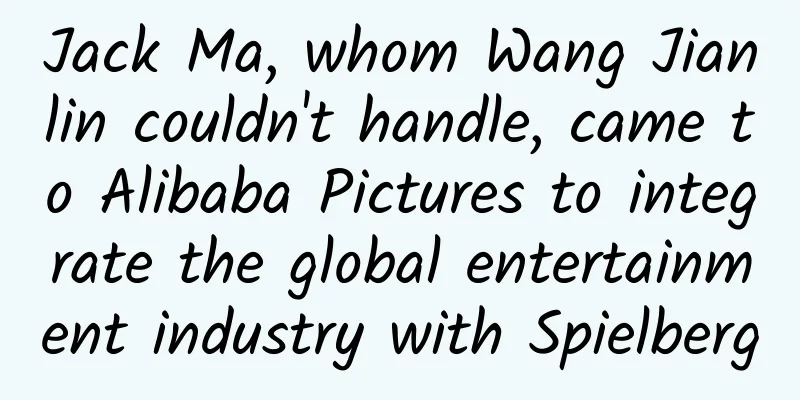Will Xiaomi and Midea "divorce"?

|
Xiaomi and Midea got married without dating each other. Is it a great love? In my opinion, it is more of a one-night stand. In my opinion, there are still many difficulties for them to truly consolidate this "marriage". Of course, the possibility of "divorce" is also very high, because Xiaomi and Midea were born in completely different family backgrounds. As we all know, Xiaomi started out as a mobile phone brand relying on Internet marketing. Later, with various evolutions and twists, it became an Internet brand that quickly swelled up after being flooded with capital and grafted with capital. Midea is an integrated production and marketing enterprise that has been built step by step through online and physical channels. It has its own R&D center, production base, sales team, after-sales service system, etc. It is a relatively solid physical industrial brand. According to my dichotomy principle, one of the key factors for Xiaomi's rapid growth is that it has completely killed its dominant sales model and brand in the traditional offline profiteering boundary, and then independently divided itself into the emerging, civilian, and cost-effective boundary, and then attracted the emerging crowd to "protest" against the traditional enterprises on the other side of the boundary. At this time, the rise of online sales is constantly expanding and constantly impacting the original offline sales channels. The online channel is just a tool and lacks core product support, so it has led to the passionate marriage between Midea and Xiaomi. At this point, we need to think about a question: how far can the union between a home appliance company with offline channels as its core and its own full system and a mobile phone company with online channels as its core and relying on integration go? Judging from most media reports, they are basically optimistic about their marriage, but in my opinion, it may not be the case. The simplest question is how they will start a family life after they get married. This is a real life. Will Xiaomi help Midea with online marketing? Or will Midea do OEM for Xiaomi? Or will they create another "Mi"? Or will they create a "Suning" together? In any case, let's analyze the possible problems: First, if Xiaomi helps Midea with online marketing, I think the theory is better than the reality. Although all kinds of online marketing are touting how great the impact on offline is, and offline enterprises in reality have also felt the impact of online on offline sales, from the perspective of the total marketing of traditional offline enterprises, the share is still very small. If Midea allows Xiaomi to dominate and strengthen its online sales, it will inevitably lead to a backlash from its huge offline distribution system. This backlash may be good for Xiaomi, but it is extremely serious for Midea, and its stock price will inevitably fluctuate sharply downward. If it does not change, it will die, and if it changes, it will die. This may be the dilemma that all offline companies are facing at present, and O2O based on this offline and online contradiction reconciliation seems to be more of a decoration. As for Midea, maybe it will first find someone with whom they can get along well online; as for Xiaomi, perhaps out of this mentality, it will first find a big offline guy to get the certificate, and then talk about it later. Second, if Midea is allowed to manufacture for Xiaomi, I think it is almost impossible, because as long as Midea's system is used, Xiaomi will inevitably lose its current "high cost performance" gimmick advantage. The reason is simple. Midea is already a listed company. After years of learning in the capital market, it has deeply understood that the only way to maintain its market value is to drive marketing and make more money. Other ways of painting cakes to satisfy shareholders are of little significance. This is completely different from Xiaomi. Since Xiaomi has not yet been listed, it is more of a one-sided model for those VCs that have settled in. Therefore, from the perspective of finding Midea as a foundry, Xiaomi obviously cannot afford the costs brought by such "standardization" and Midea's own profit requirements. Unless the assembly lines that Midea makes for Xiaomi are all robot-automated production, Midea can account for the input costs in other technical transformation projects through accounting methods, and then only reflect the good-looking OEM income in sales, and reflect as little as possible the huge investment costs of this assembly line. But at present, it is obviously not mature yet. If the cost of Midea's OEM for Xiaomi cannot meet Xiaomi's current low-cost requirements, then it will be meaningless for Xiaomi to promote it online. Of course, there is another possibility, which is to satisfy Xiaomi's low-cost model through Midea's OEM, that is, Midea reduces product quality in the production process, which is obviously a way of self-mutilation for both Midea and Xiaomi. Third, give birth to a "Mi" product. In other words, the combination of Xiaomi and Midea can not only give play to Midea's R&D and manufacturing advantages, but also not affect the profit structure of Midea's current marketing system. At the same time, it can use Xiaomi's online marketing advantages to endorse the marketing share of Xiaomi and Midea. Then the combination of the two and giving birth to a child together, that is, "Mi" may be the only way out. But the question is again, it is not whether the child can be born, but who will raise it after it is born? The question is how to raise it. If it follows Midea's way, with a standardized R&D system, a balance of interests among all parties, and perfect employee benefits, then even if all profits are given up, the products produced will not be as low as Xiaomi's requirements. At this point, Xiaomi will certainly not accept it, because the core of Xiaomi's online marketing is not its online marketing methods, but its "copying low prices", which is to eliminate the R&D costs of traditional companies; then lower the prices of the supply chain (of course, the quality will inevitably decline); then cut off the profits of the third, fourth, and fifth levels of the traditional offline marketing channel system, leaving only one level; then reduce its own corporate profits, and use these four knives to cut itself into a so-called "high cost-effective" appearance. If Xiaomi follows the model, then what is needed is not a system like Midea or Haier, but those entrepreneurial teams that have not yet formed a system. Since these teams have not yet been standardized, their costs in all aspects are relatively low and they are easy to control. These teams can completely castrate themselves according to Xiaomi's requirements. As for the quality of the castrated products, that is another matter. Anyway, there are powerful "Mi fans" who will pay for it. Obviously, the path of Xiaomi and Midea to create another "Mi" is not feasible. Fourth, they should create a "Suning" together. In other words, they should rely on Midea's huge product line and its strong offline sales network, and Xiaomi's excellent online marketing capabilities, and combine the advantages of the two to form an online and offline O2O mall similar to "Suning". Theoretically, this model is feasible, as long as the interests of the current offline sales system of Midea are properly maintained. At this point, the problem arises. If the interests of the offline sales system of Midea are maintained, and its greater enthusiasm is exerted to invest in the establishment of offline warehousing, distribution, logistics, and after-sales systems to meet the requirements of online, that is, the so-called O2O model, then greater interests must be touched. Especially for some terminal outlets, they do not have the so-called brand loyalty, but more of a loyalty to interests. They will show the so-called "brand loyalty" to the brand that can provide them with higher profits. Once Xiaomi and Midea choose to do so, the concept and model advocated by Xiaomi will be worthless, which is completely contrary to the "high cost performance" advocated by Xiaomi. In addition, there is Suning in front, and Tmall and Tengu in the back. If the interests of Midea's offline sales system are not well maintained, this model will inevitably fail. The reason is simple: Xiaomi cannot spend a lot of money to build an offline marketing network system. If Xiaomi offends Midea's offline marketing system, they will not have the actual motivation to cooperate without sufficient interests. Therefore, in my opinion, the marriage between Xiaomi and Midea, no matter how you look at it, left, right, up, down, front or back, it is a one-night stand. Even though they got married under the passion of a one-night stand, I have only wishes for their future and two words to say, "Hehe". As a winner of Toutiao's Qingyun Plan and Baijiahao's Bai+ Plan, the 2019 Baidu Digital Author of the Year, the Baijiahao's Most Popular Author in the Technology Field, the 2019 Sogou Technology and Culture Author, and the 2021 Baijiahao Quarterly Influential Creator, he has won many awards, including the 2013 Sohu Best Industry Media Person, the 2015 China New Media Entrepreneurship Competition Beijing Third Place, the 2015 Guangmang Experience Award, the 2015 China New Media Entrepreneurship Competition Finals Third Place, and the 2018 Baidu Dynamic Annual Powerful Celebrity. |
<<: Maybe the Apple Watch isn't for you
>>: Apple Music Streaming Makes Up for Loss: Seeking Exclusive Copyrights from Singers
Recommend
What to do if space travel is delayed and you don’t have enough food?
China's space station has officially started ...
The world's most expensive VR! HTC Vive unboxing
Earlier this month, HTC's virtual reality devi...
Yushu SEO Training: Is the website over-optimized?
Does excessive website optimization affect rankin...
A growth activity idea and plan
For Internet people who are engaged in user growt...
Why did Yongle move the capital? The splendor of the Ming Dynasty behind the "convex" shape of Beijing
When talking about the Ming Dynasty and Emperor Y...
What does it mean when publishing Tik Tok works and being restricted? Under what circumstances will the traffic of Tik Tok works be restricted?
Some friends have opened Douyin stores on the Dou...
Why don’t the “cherry-flavored” snacks you eat look like cherries?
In daily life, if we only talk about fruit drinks...
Introduction to Xiaomi Information Stream Advertising Resources
Introduction to information flow advertising reso...
The pretty elf in the countryside, the pure-colored mountain wren
A bird's eye view of science Quanzhou Associa...
Frogfish: The world's most powerful and fastest mouth
Frog fish walks A silly and laborious look leisur...
The "king of anthocyanins" is not blueberry but this! Eating more can protect the brain, eyes, and inflammation, and can also reduce the risk of coronary heart disease!
Author: Xue Qingxin, registered nutritionist Revi...
The Cambridge History of China (Chinese Edition, 11 Volumes) PDF Scanned Version Baidu Cloud Download
The Cambridge History of China (Chinese Edition, ...
Can the 360 version of bidding software only obtain rankings from actual promotions?
(1). The mobile version of 360 is basically 0. Cu...
Toutiao advertising strategy revealed: Why is my advertising performance always so poor?
Why are my ads always performing poorly? I think ...









